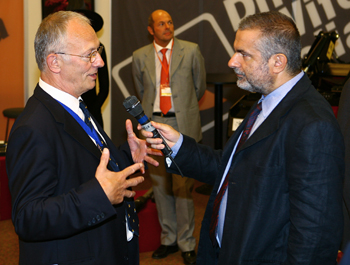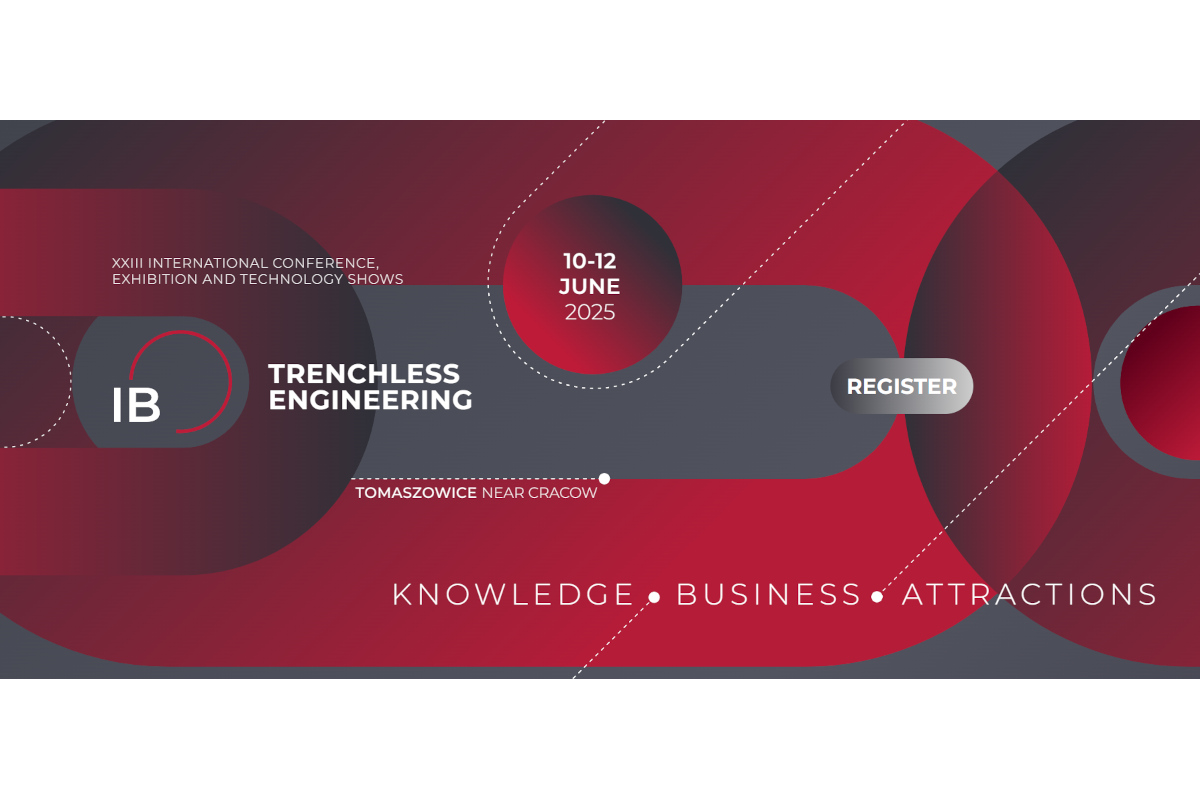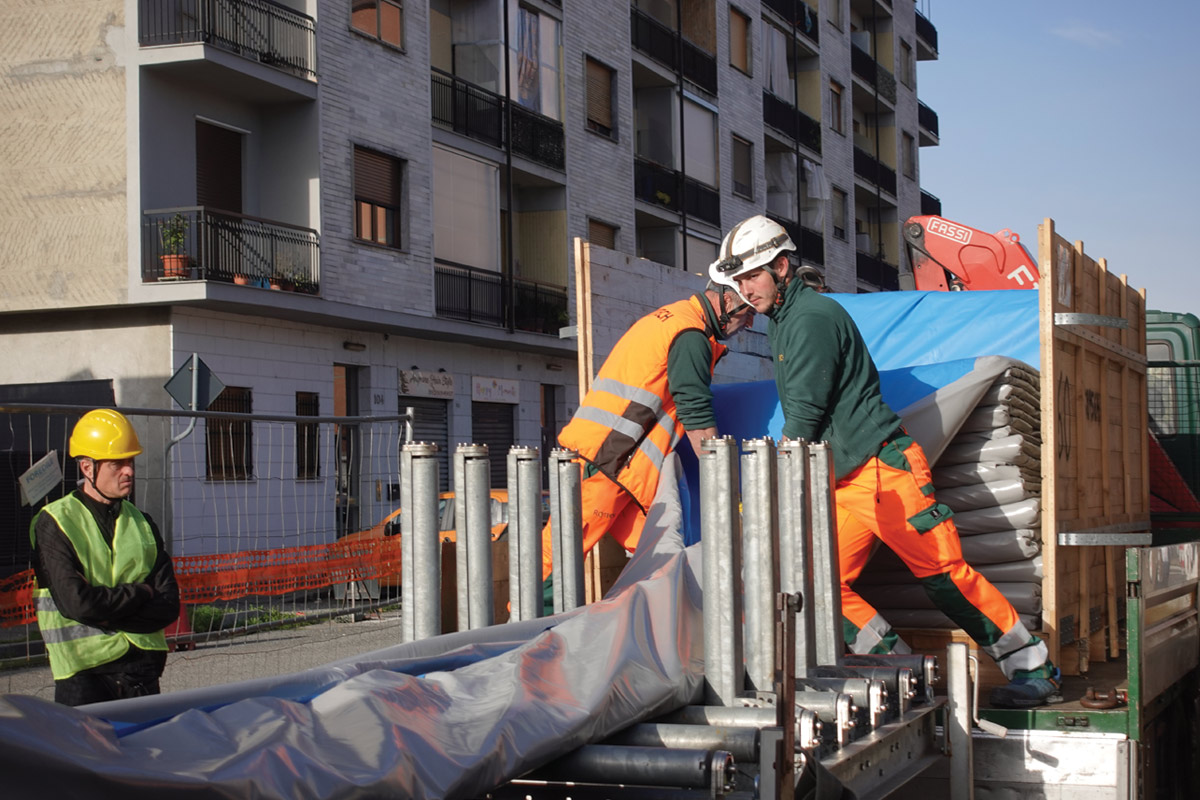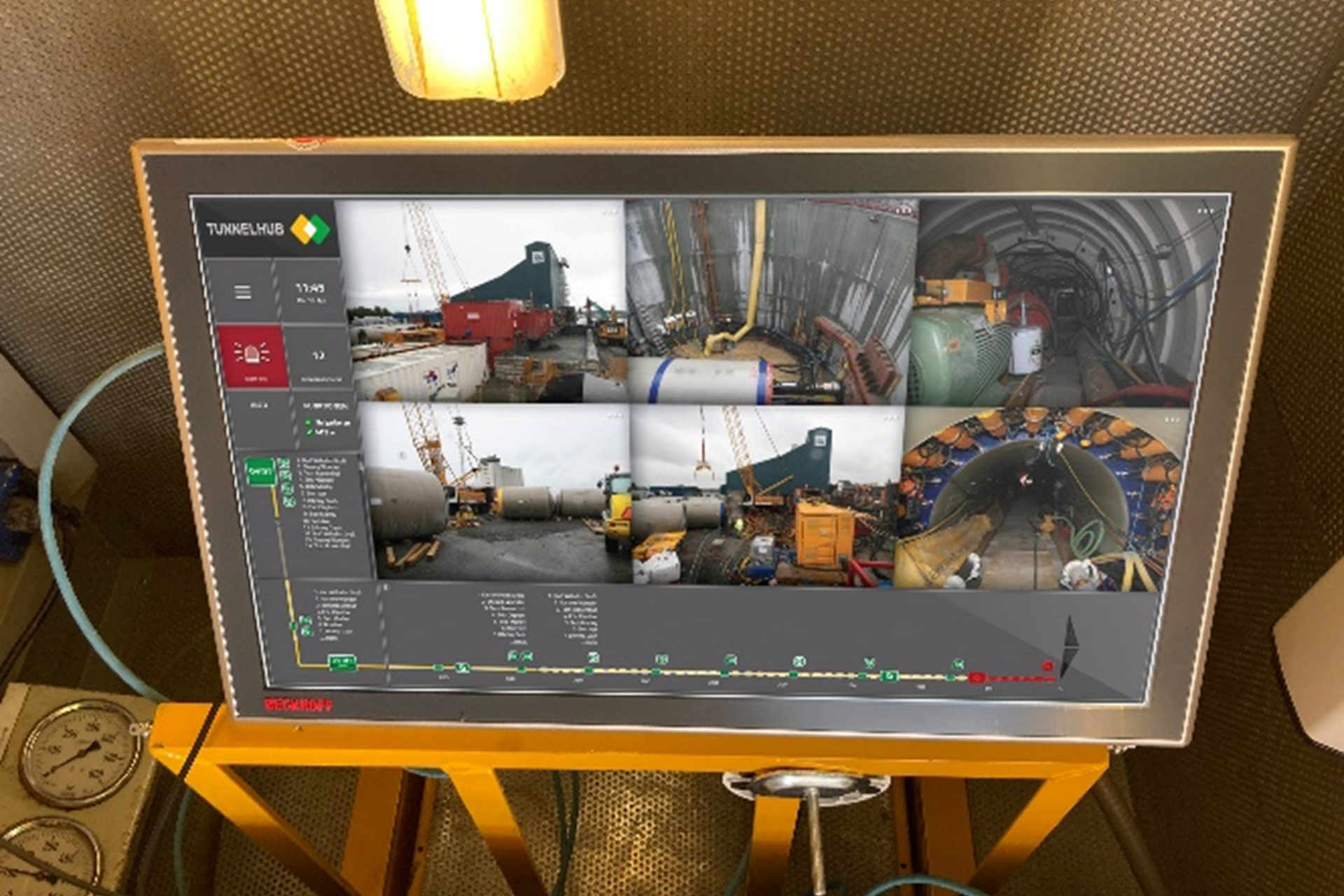Getting to Know ISTT Chairman Dec Downy
January 1, 2008
 Dec Downey became the new chairman of the International Society for Trenchless Technology (ISTT)
Dec Downey became the new chairman of the International Society for Trenchless Technology (ISTT) in September 2007 at the International No-Dig Show in Rome. In a one-on-one interview with Trenchless Technology International, Downey discusses ISTT’s future (changes are in store), his plans as ISTT chairman, the worldwide trenchless market and changes to the International No-Dig Show, as well as the influence of trenchless technology on the increase of carbon emissions.
1. Please introduce yourself to our readers. What is your background?
I took a first degree (bachelor of science in engineering metallurgy at the University of Bath from 1970-1976) and stayed at the University for an additional three years to research for a PhD in materials science and played a lot of rugby football.
2. How did you get involved in trenchless technology and in what capacity?
I joined the research team at the ARC Group, a leading building materials supply company, in 1973 and quickly found myself involved in concrete pipe manufacturing; leading a team to develop a glass reinforced concrete pipe that showed great potential for pipe jacking. The new pipe was licensed around the world and achieved a level of success as the Superline Pipe in Japan. I met with Dr. Tohyama in 1981, when he was director general of the Sewerage Division of the Ministry of Construction in Tokyo and he introduced me to microtunneling. Together with John Heavens, I encouraged Tohyama to participate in the first No-Dig Conference and later he became the first ISTT president.
3. What were your thoughts about the technology initially?
We marketed the Superline Pipe as a low-dig, narrow trench application product, so I was already pre-disposed to less trenching. But once I had seen pipe jacking and microtunneling close up, I was completely sold on the concept. I published my first paper on Japanese microtunneling in 1984.
4. How/why did you get involved in ISTT?
We promoted the Slimline/Superline Pipe at the first No-Dig Exhibition in 1985 and I was among the first couple of dozen people to sign up as a member of ISTT in 1986 — the 1985 Conference and Exhibition was alive with enthusiasm, and it was a great time to get involved — you just felt you had to pick up the football and run with it.
5. What are ISTT’s plans for 2008?
We have a major agenda for change. First, we want to create a Technical Panel to expand on the technical secretary’s pioneering work with the Trenchless Technology Resource Centre. We feel that the span of expertise needed by the ISTT can no longer be provided by a single person and the panel will replace John Heavens when he retires.
Second, we need to recruit an executive director to follow John Castle, our present executive secretary, who is also retiring in 2008. There is a name change because the new executive director will have a more strategic role with the responsibility for expanding our membership and increasing the profile of trenchless technology with decision-makers, opinion formers and the general public worldwide. This is because the role of the ISTT has changed a great deal since the beginning of this millennium. The ease with how data and news can now be distributed to members and to the trenchless community by electronic methods has reduced the effort the Society needs to put into this activity. Yet at the same time, with this increasing volume of information flying around on every conceivable topic and issue, it also means that the Society needs to put in far more effort to keep trenchless activities visible and to continue to get the unique trenchless message across to politicians and decision-makers. As the world moves toward information saturation, the ISTT has to ensure, on behalf of its members and the public, that the trenchless technology message is not lost or submerged in the torrent.
Third, we intend to continue the activities our members want. Populating the Trenchless Resource Centre to make it the largest and most comprehensive trenchless database in the world is a priority. We also intend to increase the formal ISTT support for events at regional and national levels and finally to develop a long-term program for the annual International No-Dig, which will include venues where there is no host national Society.
Supporting me in all this work, I am very grateful for the time and effort given by the international directors. It is this determination by the Board to keep the ISTT in tune with the information culture that we live in, which is underpinning the change program. In the day-to-day running of the Society, I also have new members on the Executive Steering Committee with a whole lot of fresh energy and ideas — it is an exciting period of change as the ISTT approaches its 25th birthday in 2011.
6. Discuss the importance of the ISTT chapters around the world. Are there any more chapters in the works?
We see a lot of opportunity for new members in the developing world, particularly Asia, where I have spent much of my career. These countries make up more than three quarters of the world’s population, where more people now live in urban areas than in the countryside, desperately need the fast track route that trenchless can provide to install the necessary utility infrastructure in their towns and cities. Also Eastern Europe, Africa and South America need help refurbishing and enlarging the old networks that are so essential for their continuing economic development. Much of the work in these two groups of countries is being funded by pan–national organizations such as the World, Asia and European Development Banks and the ISTT needs to encourage both the fledgling trenchless groups which already exist, to form into organized societies to take advantage of the work, and to support our members that supply technology to this developing world, particularly those from North America, Japan, Western Europe and Scandinavia. The ISTT can manage both these roles by showcasing their skills and supporting their efforts through education at various levels. We are actively working on the creation of new affiliates in Korea, South East Asia, Turkey, the Eastern Mediterranean, the Black Sea and Central America.
7. What do you see as the most important industry issues you face as ISTT chairman over the next few years?
We have to get better at asset location, asset condition assessment and reinstatement of connections. Shortcomings in these three areas are holding back our members from taking a bigger share from open trench pipeline construction and rehabilitation. Utility owners will not accept undue risk and they want our industry to find and offer proven solutions. The ISTT has a role in this by supporting the Research Colloquia and by proving the opportunities for the open exchange of information at our conferences and seminars. The great strength of the ISTT is that it can provide an honest appraisal of the scale of the problems and ensure balance and encouragement (for example through the No-Dig Awards) as our members evolve long term viable solutions.
8. What goals do you want to achieve as ISTT chairman?
I have just taken over a healthy society from Menno Henneveld, with a clear vision of where it wants to go set out in our Strategic Plan “2K10.” When I hand over to Sam Ariaratnam in three years, I’d like it to be an even stronger and faster growing organization that has absorbed and dealt with the transitional issues that it faces in 2008. I want to expand our influence with a range of related industry organizations, develop our finances with the sensible use of commercial support and for the ISTT to become a lean and effective, self-sustaining organization. I also want all the hardworking volunteers in the affiliates and on their executive steering committees to have a little fun, feel part of a team and get a sense of real achievement for the time they give so generously.
9. There are some changes in the works for future No-Dig shows (such as involving countries that do not have affiliated societies). How important are shows like No-Dig and TRENCHLESS Middle East and the like, to the industry?
We have set ourselves a target of a long-term program linking international and regional events, collaborating with affiliated societies and linking with independent exhibition contractors. We have a good history of cooperation with the organizers of TRENCHLESS Middle East and TRENCHLESS Asia, going back to the first No-Dig Live in the United Kingdom, and work with the French Society on “Ville Sans Tranchee.” The most recent No-Dig Mediterranean, in partnership with the Italian Society, was a good example of how to focus on a region and set achievable targets to promote trenchless into new markets.
The 26th International No-Dig in Moscow will also experience a first, because it will run in parallel with a large, well-established Russian exhibition dealing with the environment and exposure of trenchless technology to just the type of new audience we want to influence. The Board has agreed we should expand these new concepts for the No-Dig to encompass new territories, even where there is no local partner, and our early discussions with local utility owners suggest this will be very welcomed.
The Board does not underestimate the complexities of the task and the challenges we will face in future years as commercial event organizers take advantage of the growth in environmentally sustainable activities and competition from other events increases. Being such a specialist sector the Board believes the No-Dig should continue as an annual event by being more flexible and dynamic.
10. Where do you see trenchless technology heading in the short-term and long-term?
Making big strides in the clean water construction and rehabilitation business, and optimizing existing technologies to provide more “least cost” technically viable solutions in the short term; developing solutions for the location and condition assessment issues in the longer term.
11. With the increased awareness of carbon emissions, what impact will trenchless technology have on the construction industry? Where does trenchless fit in with regards to carbon emissions?
We see increasing numbers of calculations being brought forward comparing carbon emissions between various methods for working on underground utilities. We see this as an important way to promote trenchless technology, as it is obvious that traditional open-cut is essentially carbon inefficient, besides causing environmental damage and subsequent problems with settlement. This increased awareness that decision-makers now have to make “green decisions” is a valuable tool for our members to promote their skills. I believe we should find common ground within the industry to provide a sound basis, that decision makers will accept, to make these comparisons. A specific session at an upcoming conference to define ground rules could be a helpful step forward.
12. What are the keys to the continued success and future of ISTT?
We must secure our cash flow and balance sheet so that we can invest in both internal data and information, and the external promotion of trenchless technology, as a very visible benefit of membership. We must keep in constant touch with members’ needs, anticipate the cultural and environmental challenges of an ever changing world, and grow into new areas of competence as a resource centre and educator for our technology.
Sharon M. Bueno is managing editor of Trenchless Technology International.




